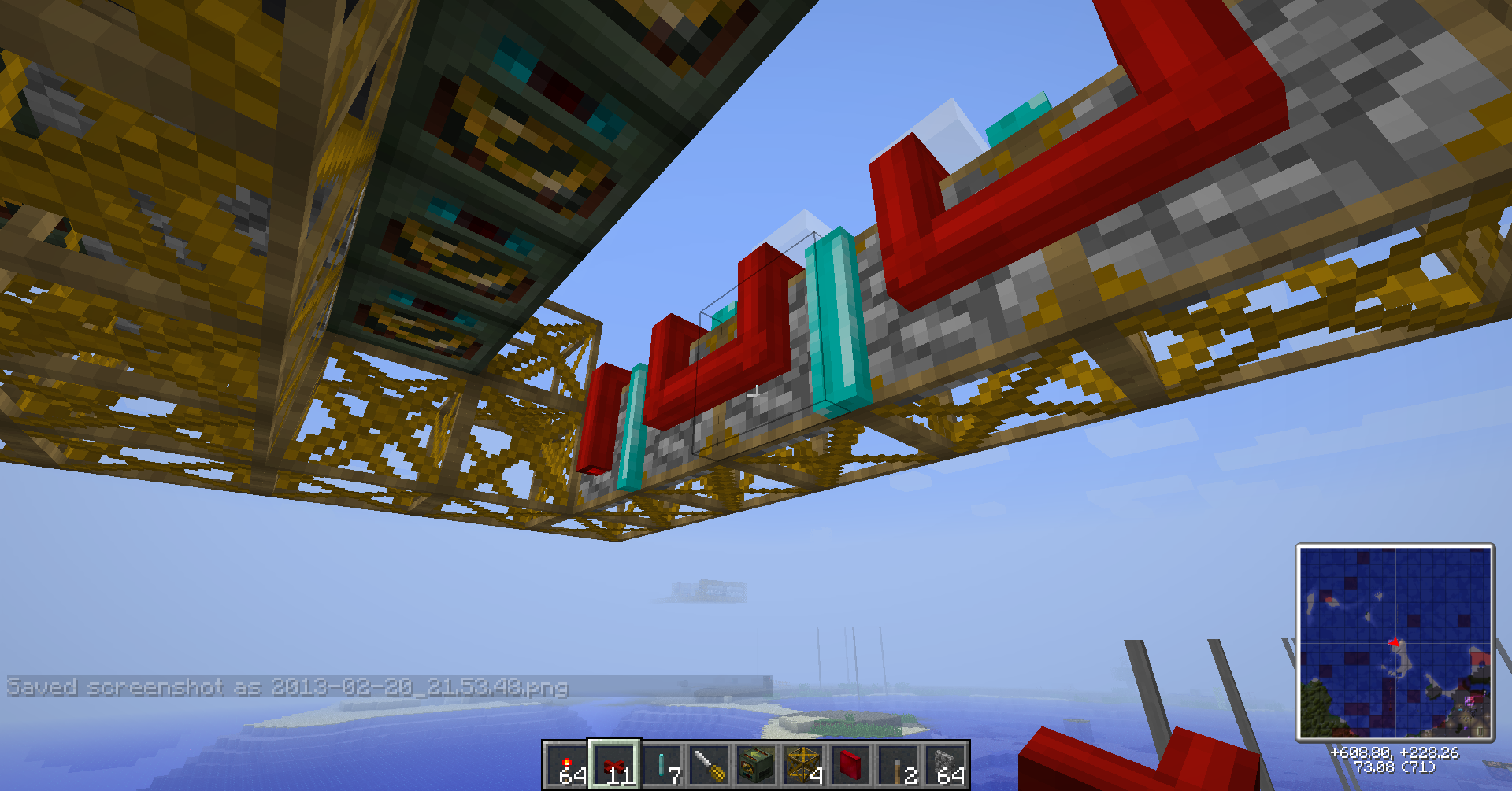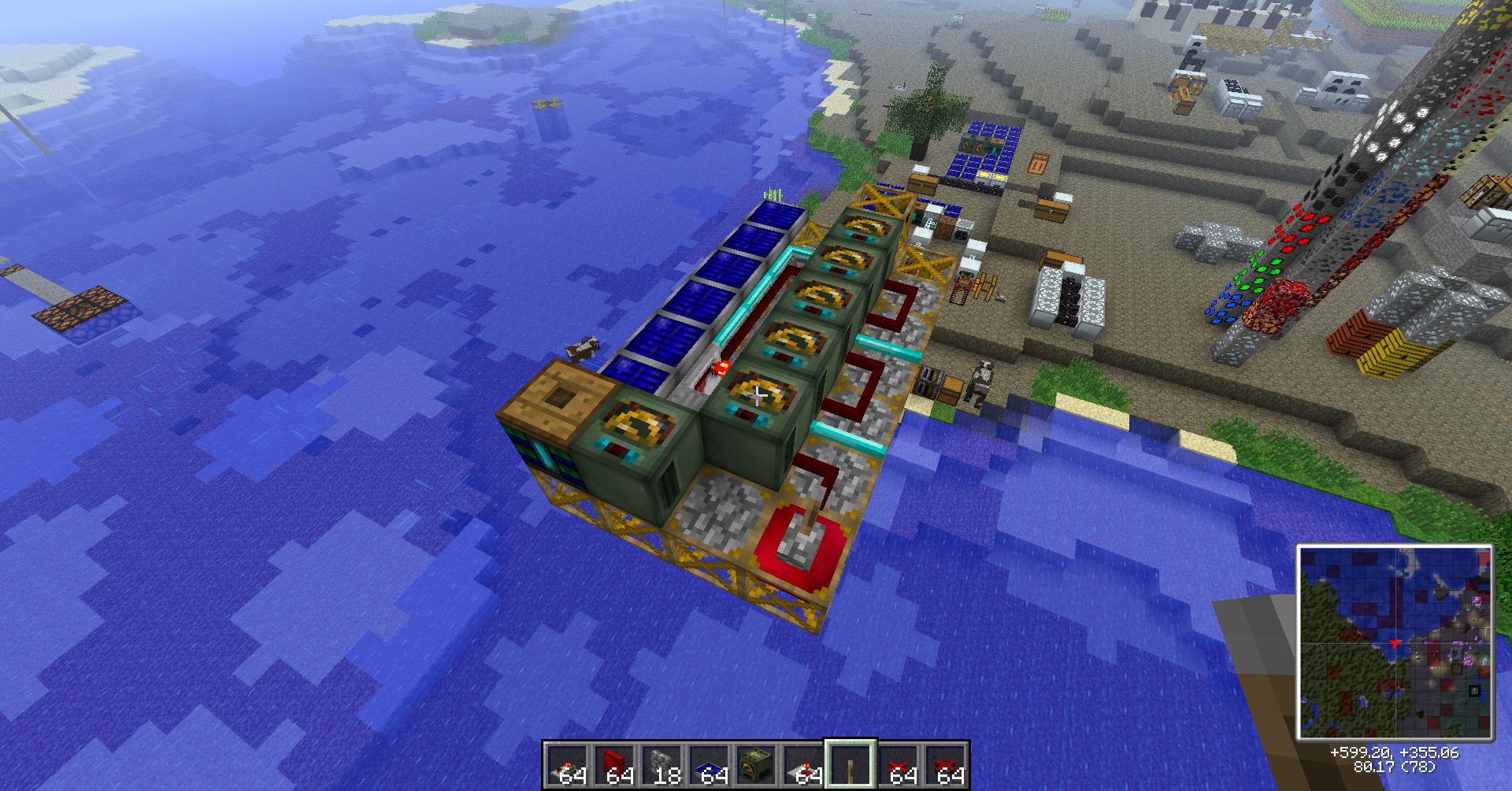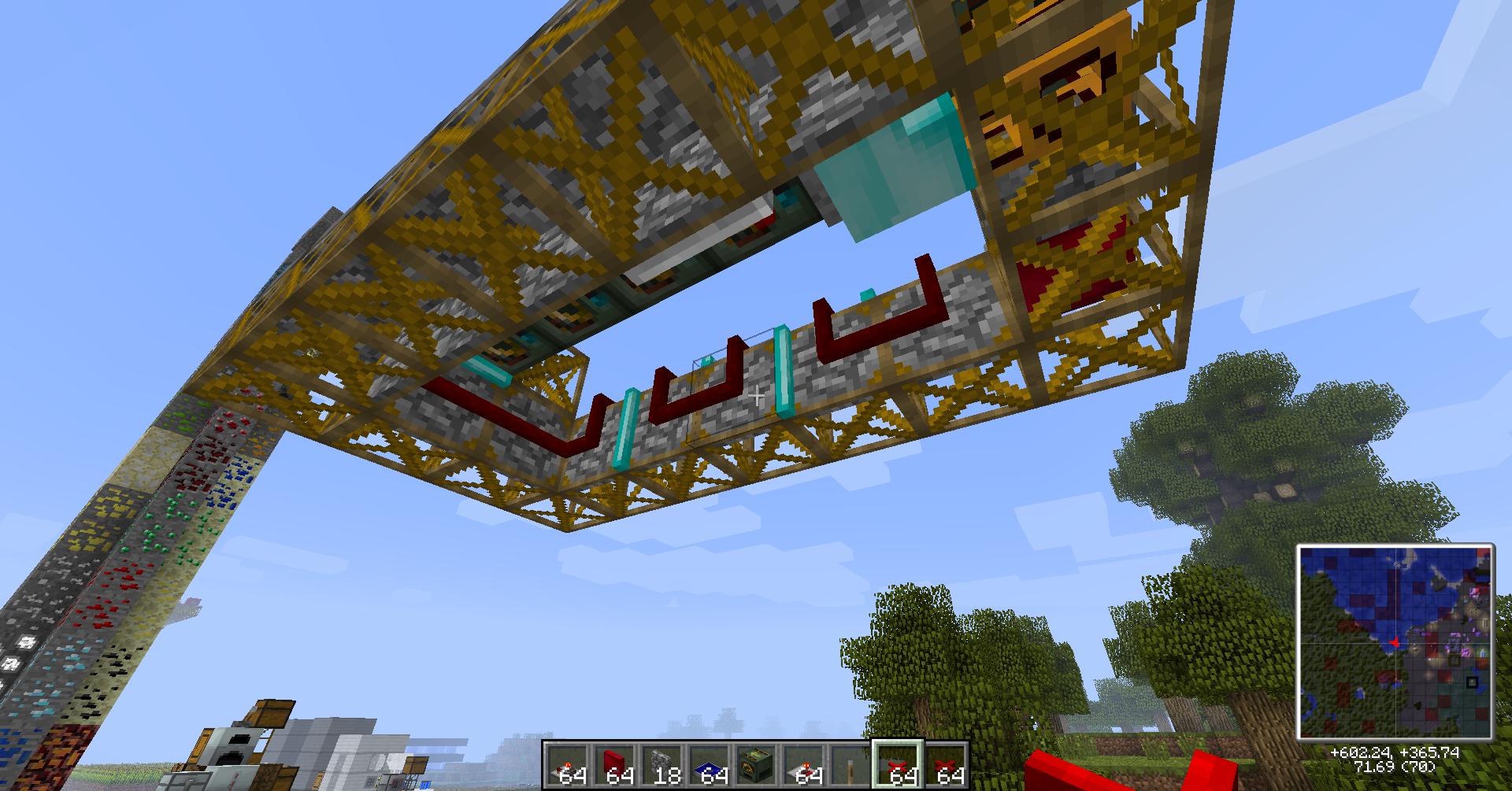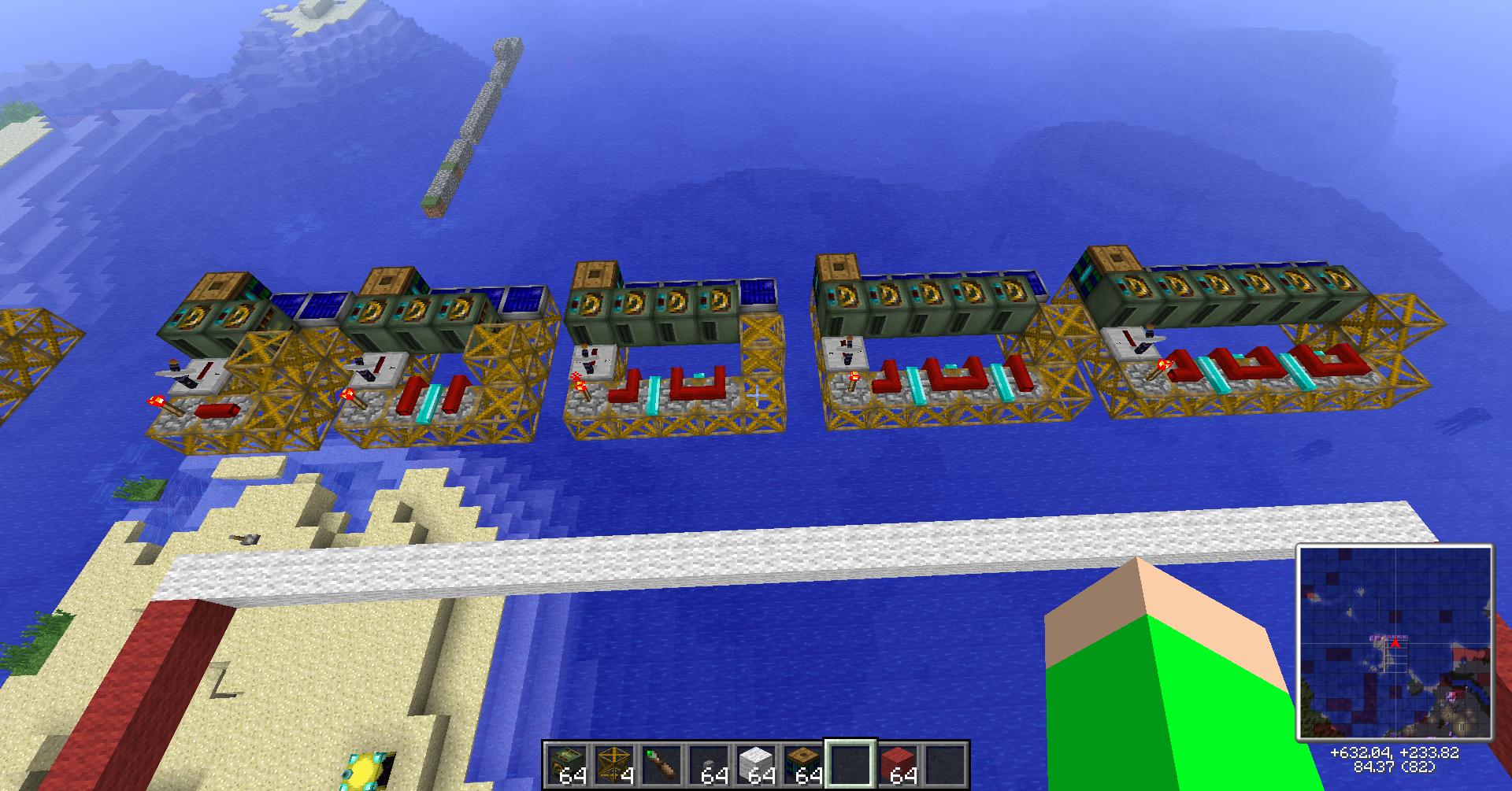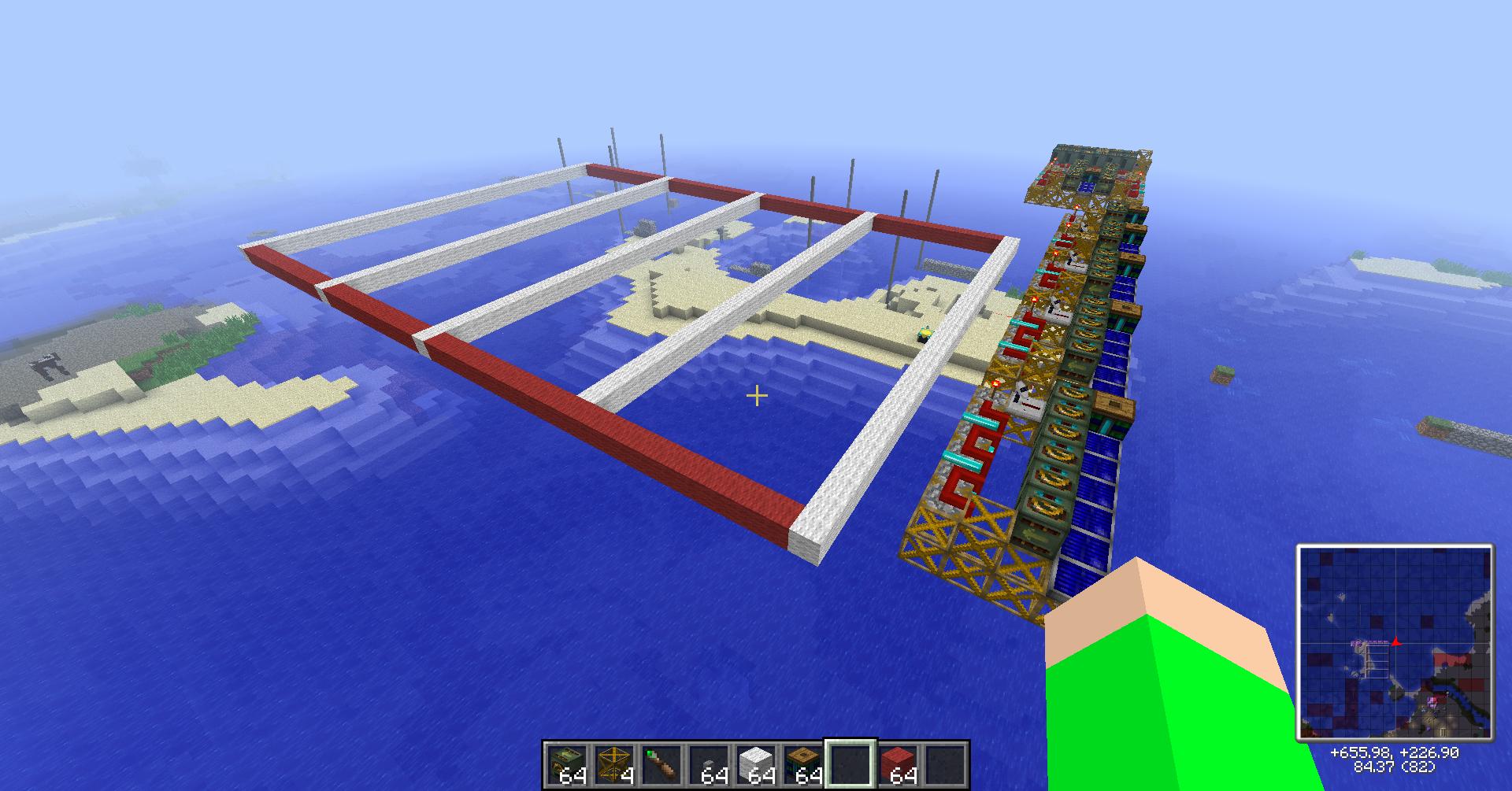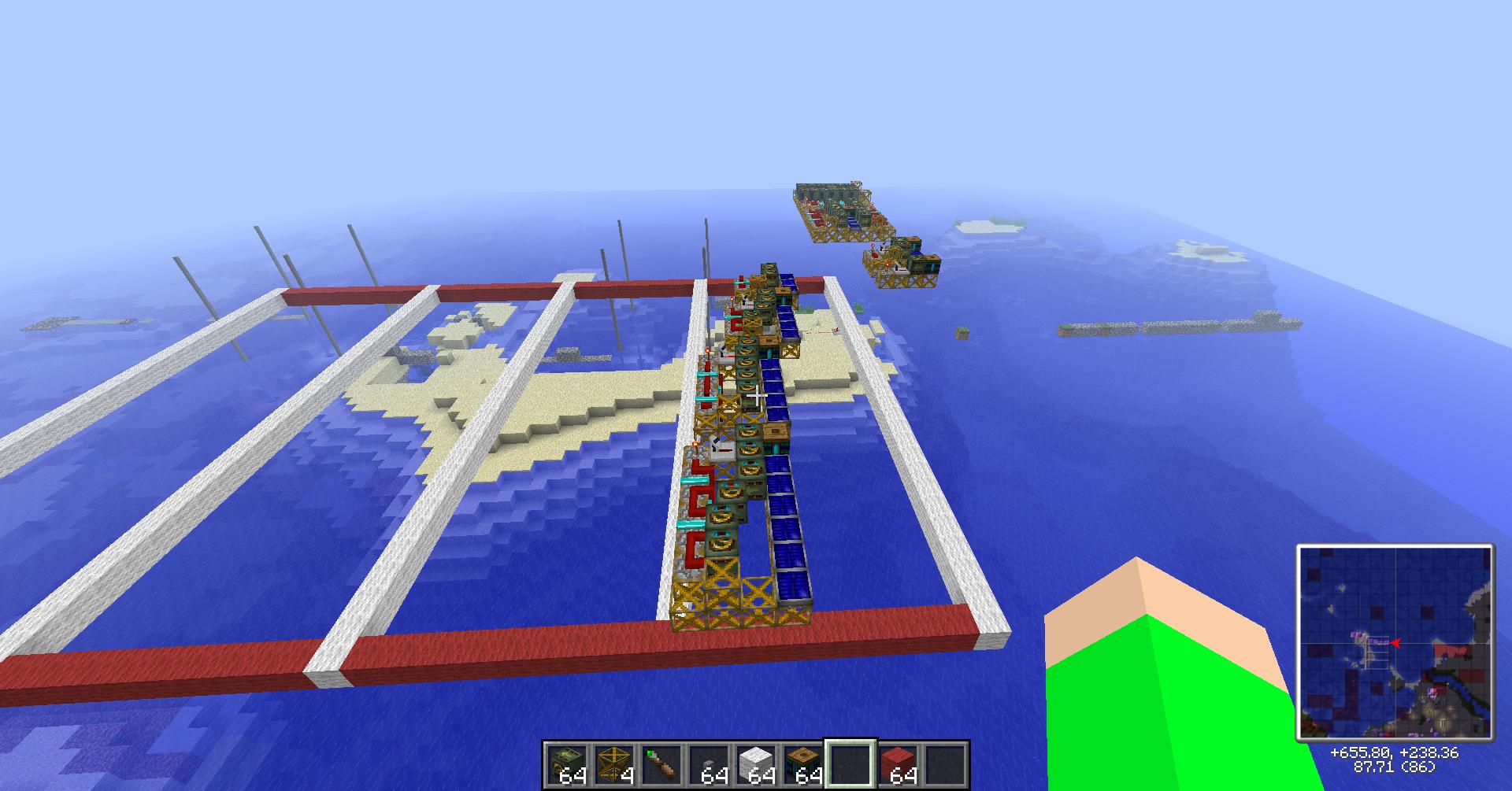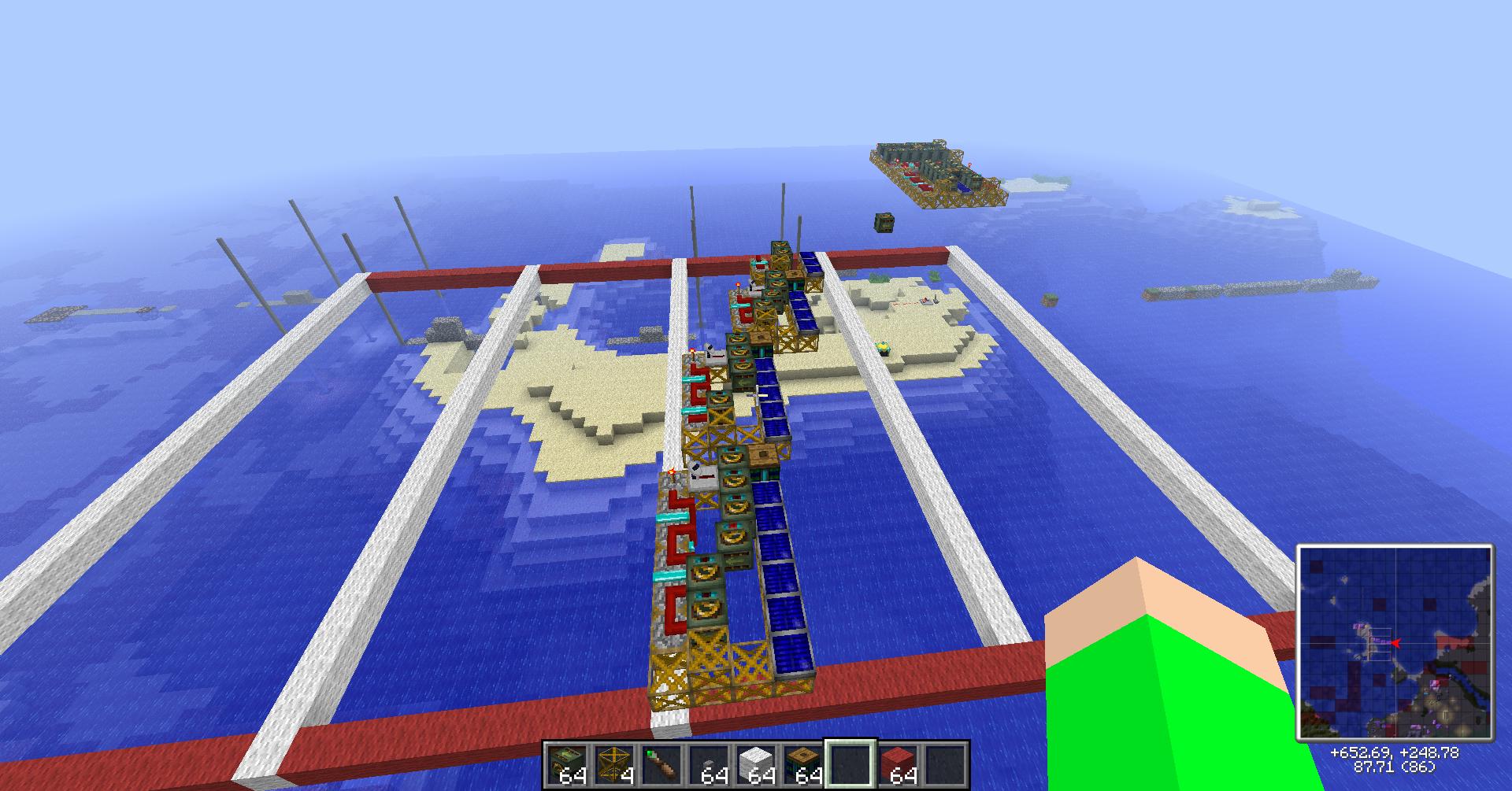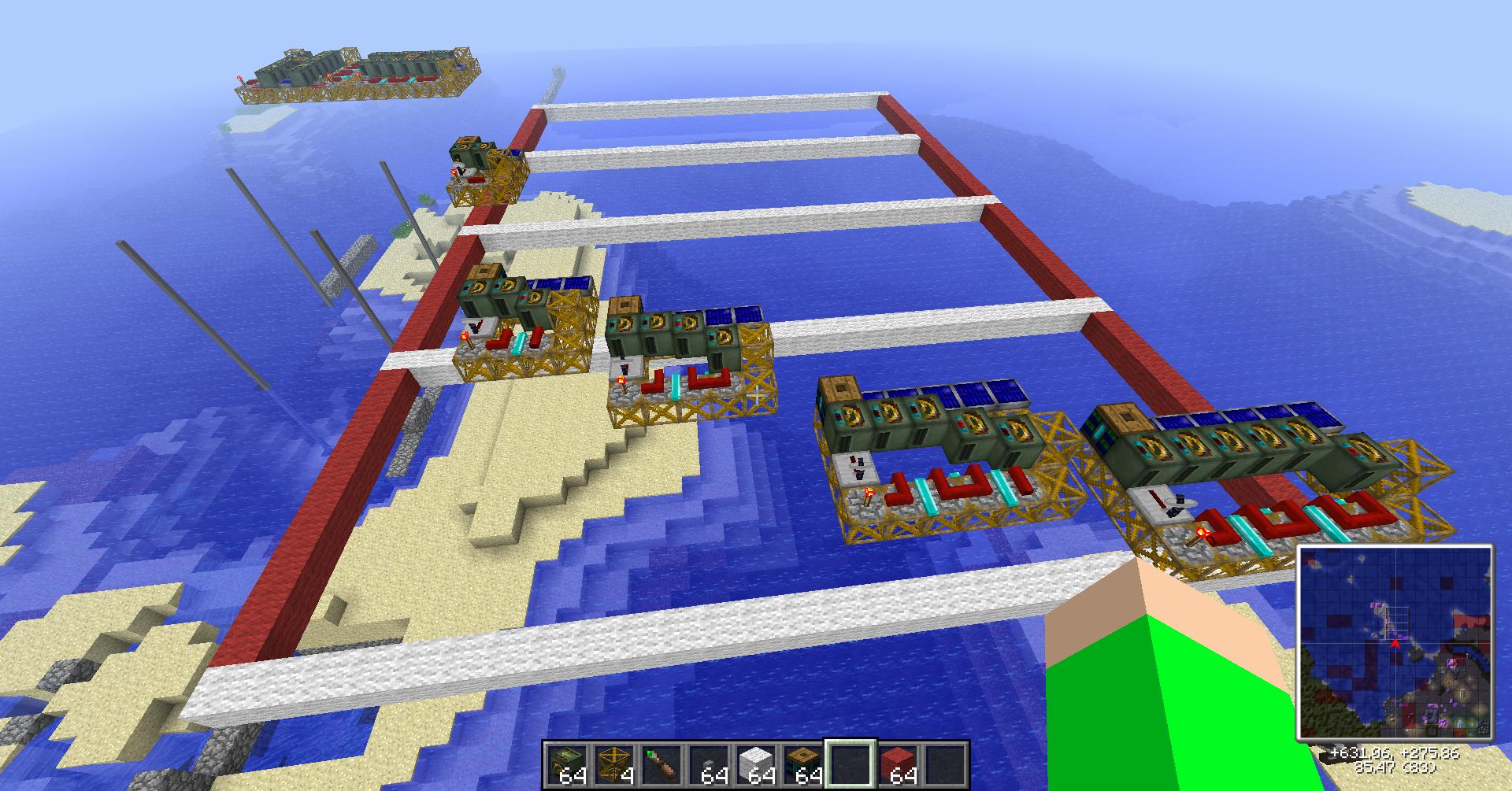For 6 axis movement inch worm makes a lot of sense, but if you know you want to go multiblocks in one direction they can be slow.
I remember seeing a fast and simple system to handle multiply moves in one direction quickly/smoothly.
I have been going over videos and while I've found some potential system I don't think they are exactly what i saw back in FTB beta.
Anyone know/seen other frame motor movement system other than the inchworm?
Candidate 1 (this may be it, but doesn't look familiar):
Candidate 2 (moves a little different, but think it is still an inchworm):
Candidate 3 (Reminded of the high speed system saw a while back):
I remember seeing a fast and simple system to handle multiply moves in one direction quickly/smoothly.
I have been going over videos and while I've found some potential system I don't think they are exactly what i saw back in FTB beta.
Anyone know/seen other frame motor movement system other than the inchworm?
Candidate 1 (this may be it, but doesn't look familiar):
Candidate 2 (moves a little different, but think it is still an inchworm):
Candidate 3 (Reminded of the high speed system saw a while back):



